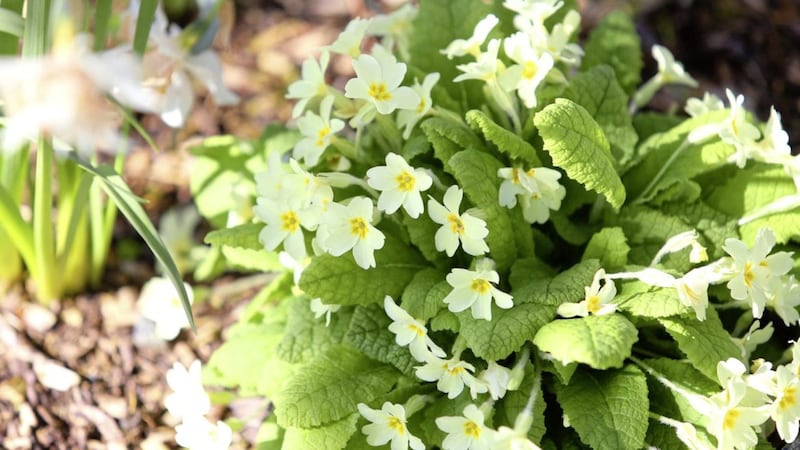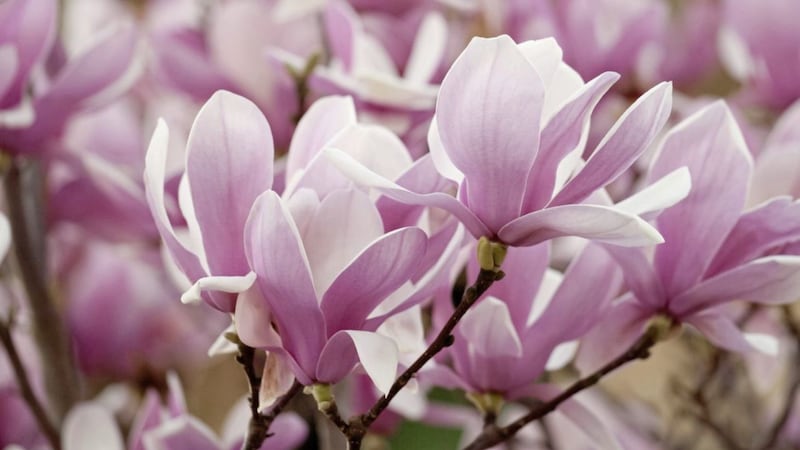EARLIER this week on a brisk evening walk along the coast they caught my eye from a 100 yards away. Hundreds of them used to populate all the steep banks in this particular field, what’s known locally as ‘the park’. Over the past decade or so their numbers have been slowly diminished by the heavy hooves of beef cattle. You don’t notice the decline until it’s really noticeable.
The primroses that remain are along ledges on a clay cliff. I only once saw a young bullock venture that direction before being driven back by whins and vertigo. There, confined to their barely sheltered reservation, they can at least live in peace, troubled only by an occasional salty, gale-force wind.
Thankfully the native Irish primrose (Primula vulgaris) is built to withstand the worst of the spring elements. Compact and low growing, it is a hardy, robust little plant that would likely go unnoticed were it not for those distinctive pallid yellow flowers that can appear as early as January but peak in April and May. While it is no relation of the rose, its name means first rose – or first flower – depending on who you listen to. The yellow flowered primrose (which strictly speaking has two types of flower) is by far the most common but plants with pink flowers have been spotted – some wild mutations, others from cross-pollination with garden cultivars.
In the wild this herbaceous perennial’s home is (un-mown) verges, hedgerows, woodlands and banks – anywhere shady it won’t be trampled by livestock – but it also makes a good plant for the garden and is easy to grow and maintain. It’s technically illegal to take plants from the wild though I now deeply regret not taking a load from ‘the park’ before they were decimated. They can be grown from seed sown from autumn through to late winter.
A relative of the primrose is the wild native cowslip (Primula veris). It too has yellow flowers though they appear in nodding clusters on taller stems. The cowslip is less common than the primrose and flowers slightly later. Unlike the primrose, cultivated varieties of cowslip are rare.
A hybrid of the two is polyanthus, a plant bred for its colourful spring flowers, that come in dazzling combos of blue, pink, yellow and red. If you know polyanthus, you’ve probably guessed that I’m no big fan. I’ve been spared prolonged exposure to it but imagine the experience would bring on the mother of all migraines.
Slightly less garish though still with the potential to induce something akin to an acid flashback is Primula sieboldii – or the Japanese primrose – which originated in north east Asia. It has been in Europe for more than century and is fully hardy.
All of the above like similar conditions – well-drained soil, plenty of humous or leaf mould and a bit of shade.
On the fussier side soil-wise are giant cowslips (Primula florindae), which prefer a well-drained loam. However, they doesn’t require the same level of shade so can be positioned in full sun or partial shade.
For primrose aficionados, Carlow-born Co Antrim-based retired dentist Joe Kennedy is something of a legend. He featured in BBC Gardeners’ World five years back when Carol Klein travelled to Ballycastle to gain an insight into his breeding techniques and the stunning results.
In 2006, Kilkenny nurseryman Pat Fitzgerald began propagating Kennedy’s cultivars and selling them. Kennedy Irish Primroses represent 35 years endeavour and are now world-renowned. Notable varieties include ‘Inisfree’, a vivid red with yellow eye on dark foliage and 'Drumcliffe', another dark foliage variety with large lilac flowers.








